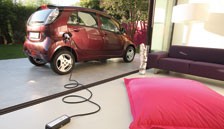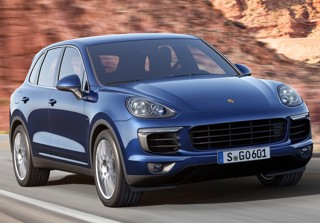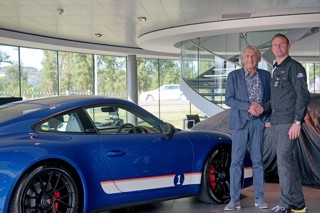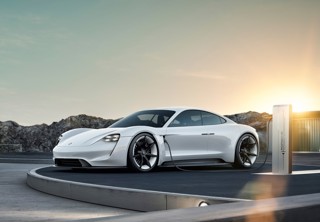Businesses are likely to be the largest early adopters of electric vehicles (EVs), now that the first mainstream production models are entering the UK car market.
However, companies are being warned against ‘impulse buying’ electric vehicles (EVs) before fully understanding the ability and limitations of the technology.
Six electric vehicles from vehicle manufacturers are due to be launched in 2011, with a further 10 electric, plug-in or range-extended electric cars expected in 2012.
But with a limited charging infrastructure, poor range compared to hybrids and conventional cars, as well as higher purchase prices, businesses could be buying into technology that is in danger of being superseded within 10 years.
The British Vehicle Rental and Leasing Association has urged fleet operators to ensure they make the right choice if they are considering electric vehicles.
John Lewis, chief executive of the BVRLA, said: “BVRLA members can be great advocates for the move to electric motoring, but we need to look beyond the short-term taxpayer-funded incentives and marketing hype surrounding electric vehicles and find some of the answers that will enable early adopters to have the confidence to take on EVs in volume.
“We will see a number of electric evangelists making impulse purchases, but the vast majority of fleets will need reassurance that these vehicles are fit for purpose and that it makes financial sense to run them.”
Retail buyers appear cautious of putting their own money into buying an EV until the technology has been developed further.
A study by business advisory company Deloitte of almost 5,000 Europeans found that 16% would consider buying an EV and 53% were non-committal, saying they “might be willing to consider it”.
However, the majority want an EV to be capable of travelling 200 miles between charges, and have a two-hour charge time before they would be prepared to take the leap.
They also want to pay a similar screen price to that of a regular combustion engine car.
David Raistrick, automotive partner at Deloitte UK, said this signals the challenges manufacturers and dealers face in changing the mindset of consumers towards EVs.
Raistrick added: “For mass adoption, manufacturers will need to meet the challenge of pricing electric vehicles in line with consumer expectations, while still maximising their margins.
Consumers are not likely to want to pay a high price premium for EVs.
“This means that incentives such as tax reductions and exemptions will be very important to the purchase decision.
“Just as the Government supported the highly successful car scrappage scheme, it should now be turning its attention to electric vehicles.”
Norman Baker, undersecretary of state at the Department for Transport, speaking at a recent debate on EVs organised by the Guardian newspaper, said there was a need to ‘decarbonise’ road transport in the UK.
Although fossil fuels were still used in the majority of power stations that feed the national grid, it still meant EVs had lower CO2 emissions than cars with internal combustion engines, Baker said.
But companies also need a useful range from an EV – it’s not simply about advertising an organisation’s low-carbon strategy.
The best range of a new battery EV is stated at about 100 miles.
Thierry Koskas, head of electric vehicles at Renault, said that, using current battery technology, it would take another 10 years to achieve a 200-mile range from equivalent vehicles.
“Technology has improved in the past 10 years or so with range improving from about 50km,” said Koskas.
“But using this technology, we will take another 10 years before we have a 200-mile range from a battery electric vehicle.”
However, some experts believe this range will be possible within half that time.
Range issues are rationalised by using data that shows the majority of car journeys are well within the useable range of a battery electric vehicle.
While many users would be able to make a limited range vehicle work for them, a network of charging points in areas where EVs are most likely to be used is needed to avoid potentially costly downtime.
So far, just over 100 charging points have been set up.
Most EVs take up to eight hours to charge from empty, although it is possible to install fast-charge points that can recharge to 80% capacity in 30 minutes.
However, not only is the electricity from these points potentially more expensive and the power higher, repeated use is likely to shorten battery life.
Current estimates suggest that an average EV battery would deplete to 80% of its original capacity after four years of use.
But this would be much lower if the vehicle made frequent use of fast charging.
Koskas said: “Using fast charging once a month would not have any impact on the life of the batteries, but if used frequently it would make a difference to battery capacity.”
A Nissan spokesman said Leaf customers were not expected to be frequent users of fast-charging stations and the battery should be capable of performing efficiently for at least 10 years.
The Lex Autolease report, Next Generation Fleets: Is the Future Electric?, says the Plugged-in Places scheme will not be completed until 2015 and only then would sales take off in significant numbers. At that point, the UK will have 11,000 charging points nationwide.
Other markets are taking up alternative solutions to range and infrastructure problems, with Renault setting up a Quickdrop battery exchange network in Israel and Denmark.
Here, a spent battery is exchanged for a fully-charged one, with the replacement taking a couple of minutes to fit rather than the hours needed for a plug-in charge.
However, Renault has no immediate plans to set up a similar system in the UK, and it would also be dependent on adopting Renault’s preferred vehicle purchase/battery lease scheme, which has been dismissed as unworkable for setting residual values by CAP.
Koskas pointed out that leasing the battery separately from the vehicle gives customers greater peace of mind over faults.
Renault estimates that 10% of the new car market by 2020 could be made up of battery EVs, but by then hydrogen fuel cell technology could offer comparable running costs with conventional powertrains.
According to General Motors, the additional cost of hydrogen fuel cell technology in 2015 – when the technology would be ready for commercial introduction – would be about £6,000 per equivalent vehicle, but by 2022 it believes this premium could be eliminated.
Depending on a refuelling infrastructure, this could then give fleets access to zero-emission vehicles with a range equivalent to that offered by a current petrol car.
However, according to Dr Lars-Peter Thiesen, manager of hydrogen and fuel cell deployment strategy at Opel, similar incentives to the ones currently being offered for electric vehicles would be needed to encourage take-up.
Life yet in current engines
Electric vehicles have become easy headline-makers for the motor industry but technical experts agree the internal combustion engine will remain at the heart of motoring for decades yet.
Dealers can be assured that their workshops will be busy servicing petrol and diesel units towards the mid-point of this century, albeit those engines will be ultra fuel-efficient and many will be hybrids.
Lightweight structures, energy storage systems and high efficiency technology will ensure the combustion engine will stick around, particularly given the high cost and limited range of full electric vehicle technology.
Although the UK is becoming a pioneer in electric vehicle production and use, volumes will remain small for many years.
Projections from global engineering R&D company Ricardo show that most emissions cuts in the next two decades will come from internal combustion developments, efficient automated transmissions and weight savings.
The company’s research shows that development of conventional powertrains to halve their current CO2 emissions could increase their cost by almost 200%.
However, developing full petrol hybrid and diesel hybrid powertrains to achieve the same result could increase the cost by almost 400%.
Dave Greenwood, Ricardo’s advanced technology project director, said while electric vehicles could meet the needs of 90% of UK journeys, these trips account for only 60% of CO2 production.
It is higher speed journeys of more than 25 miles that create a disproportionate level of CO2.
“Electric won’t be able to provide the utility of current powertrains for many years,” he added.
Ricardo believes the increasing diversity of powertrain choices will be a challenge for carmakers, leading to an increasing number of joint ventures and partnerships.
It predicts that some carmakers will specialise in a particular powertrain, but volume manufacturers may need to have products across all powertrains in order to offer a wide product range and sustain their market shares.
More information is needed from the makers
Manufacturers need to provide customers with more detailed operational guidelines for electric vehicles.
With little detailed information on vehicle performance, warranty terms or the wear and tear of parts and components, the BVRLA claims its members have virtually nothing to go on when trying to set residual values or predict maintenance and repair costs for electric vehicles.
“Due to a lack of historic information, we are out of our comfort zone as we are unable to rely on factual information, including gut instinct,” said Phil Turle, fleet services controller at ALD Automotive, speaking at a recent EV event attended by delegates from the BVRLA Technical and Operations Forum.
He said that ALD was addressing this knowledge gap and had analysed the performance of its fleet of Toyota Prius hybrids to get an idea of their reliability and usage.
In addition, the company was also road testing a number of EV cars and working closely with manufacturers to ensure their information is both accurate and reliable.
At the end of the recent forum, BVRLA delegates took part in a workshop aimed at identifying some of the key questions that need to be answered by manufacturers. They included:
- Can manufacturers provide range figures based on different working environments of electric vehicles, for example urban, inter-urban, laden or unladen?
- What is an acceptable level of rapid charging and how could this affect the vehicle warranty?
- Will refurbished batteries be available and at what cost?
- What will the pricing and availability of electric vehicle parts be, particularly in the early years of their adoption?
- What level and availability of technical expertise can customers expect from franchised dealerships, independent garages and roadside assistance companies in the early years of electric vehicle adoption?
- Will manufacturer handbooks contain enough information to keep fleet drivers aware of the different usage requirements of electric vehicles?
“The vehicle rental and leasing industry recognises the urgent need for fleets to adopt ultra-low carbon technology and is working hard to facilitate the shift,” said BVRLA chief executive John Lewis.
“BVRLA members can be great advocates for the move to electric motoring, but we need to look beyond the short-term taxpayer funded incentives and marketing hype surrounding electric vehicles and find some of the answers that will enable early adopters to have confidence.
"We will see a number of electric evangelists making impulse purchases, but the vast majority of fleets will need reassurance that these vehicles are fit for purpose and that it makes financial sense to run them.”




















Login to comment
Comments
No comments have been made yet.